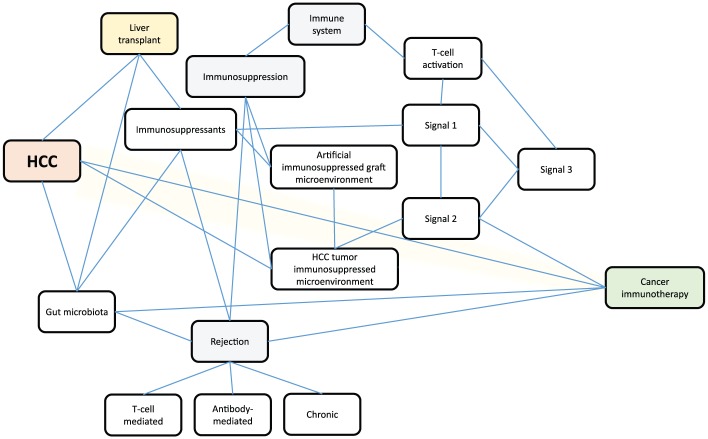Figure 1.
Schematic of the conceptual framework for immunotherapy in liver recipients with hepatocellular carcinoma. The three-signal model of T-cell activation: signal 1: antigen-specific (MHC/HLA-TCR/CD3) signaling; signal 2: cosignaling pathways; signal 3: IL-2-CD25/IL-2R signaling. Cosignaling pathways (including costimulatory and coinhibitory signals) are signals that accompany signal 1 to determine the final fate of T-cell activation. Optimal T-cell effector function requires costimulatory signals, and coinhibitory molecules contribute to immune suppression and exhaustion. Downstream pathways of complete T-cell activation include the IL-2-calcineurin pathway, the RAS-mitogen activated protein kinase pathway, and the IKK-NF-κB pathway.
HCC, hepatocellular carcinoma; IL, interleukin; NF-κB, nuclear factor kappa B
CD3, cluster of differentiation 3
HLA, human leukocyte antigen
IKK, I kappa B kinase
MHC, major histocompatibility complex
RAS, rat sarcoma virus
TCR, T cell receptor

